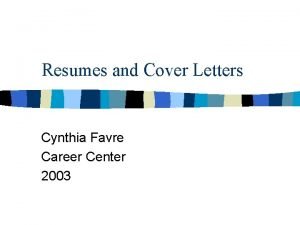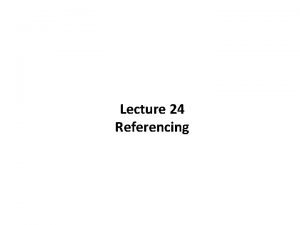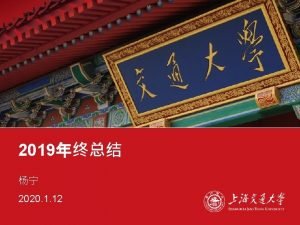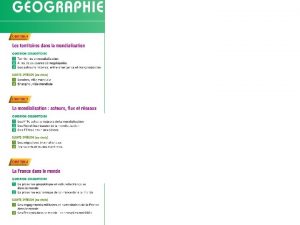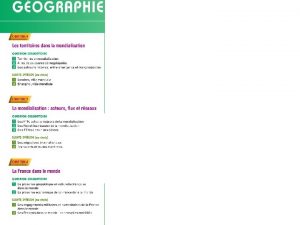Writing a Conclusion Page Reference Writing a Conclusion







- Slides: 7

Writing a Conclusion Page Reference:

Writing a Conclusion Remember: It is the last thing you will write …and therefore, the last thing the examiner will read It will leave a strong impression as to whether or not you have addressed the question

Writing a Conclusion Remember: Attempt to tie all loose ends together Refer back to the main theme or central question Feel free to broaden the discussion (briefly) to include wider themes or the bigger picture

Writing a Conclusion Remember: You could pose a question for future researchers i. e. sociologists Do not make recommendations – you are not required to do this Think – what is the message you want the examiner to take away?

EXAMPLE: Writing a Conclusion Question: Examine the ways in which the mass media construct and reinforce social stereotypes around gender, ethnicity, and age (sample 1) The modern media of communication are central to an individual's life, providing many necessary information services as well as offering possibilities for self-enlightenment and entertainment. The media constructs and reinforces social stereotypes around gender, ethnicity and age around the images that are produced, and as a result they are capable of shaping the individual's attitudes and beliefs. Despite such interpretations, it is the choice of the individual what they decide to consume from the diverse amount of information that is served openly to the public, and to eliminate misleading representations concerning members from diverse cultural groups. Check the red text against the question – matches doesn’t it? !

EXAMPLE: Writing a Conclusion Question: Examine the ways in which the mass media construct and reinforce social stereotypes around gender, ethnicity, and age (sample 2) In conclusion, the mass media use stereotypes to provide truncated, fast and simple information to its audiences. Profit is a major influence in the use of these stereotypes; "Give them what they want" rather than provide in-depth individual information based on reality. Advertisers in particular want safe representations of the dominant culture's ideology to represent their product. Mass media's use of stereotypes is clearly based on the dominant culture's ideologies. Issues of power and profit are significant in the construction of images that reflect the society's ideological beliefs and values - a safe context. However, Grossberg, et al (1998) suggest that because of the increasing influence of the media in constructing people's identities, people seem to have developed a much more fragmented and fluid sense of themselves. With less commitment to any single identity, sociologists debate whether people's identities are changing as a result of the growing power of popular culture and the mass media. This question of whether mass media can bring about social change must come from outside that framework before it is reflected in it, is a debated one. The only possible answer is a combination of both. Blue text offers a summary / red text draws implications from the summary

EXAMPLE: Writing a Conclusion Question: Examine the ways in which the mass media construct and reinforce social stereotypes around gender, ethnicity, and age (sample 3) The sense of naturalness with which the media portray the "reality" of the modern world allow them to create oversimplified assumptions in the minds of their audiences. The formulaic use of labels, symbols and binary codes, coupled with omissions or over-exposure of various images and construct patterns of characterisation, and thereby objectify groups into the distinct boundaries of a stereotype (Elliot, 1996: 3). Ultimately, the continuous recycling of particular ideas and visual representations influences audiences to internalise these portrayals as their own, and to thereby validate the values and attitudes disseminated by the media (Thwaites, Davis, and Mules, 1994: 170). As Walter Lippmann wrote, " Whether right or wrong, . . . imagination is shaped by the pictures seen. . . Consequently, they lead to stereotypes that are hard to shake" (Elliot, 1996: 3). This conclusion focuses quite specifically on the topic question; that is on the ways in which the mass media creates new or strengthens existing stereotypes.

